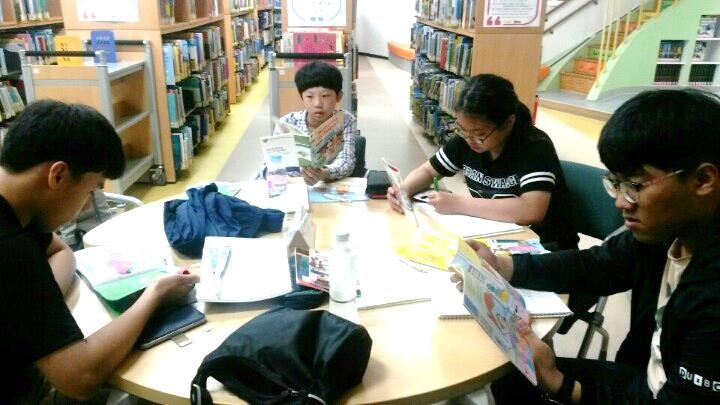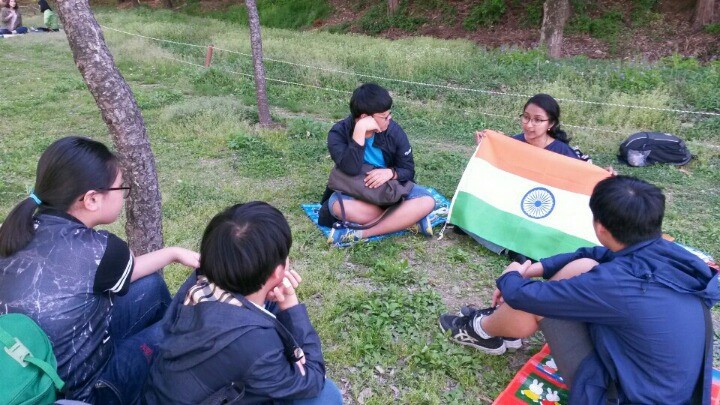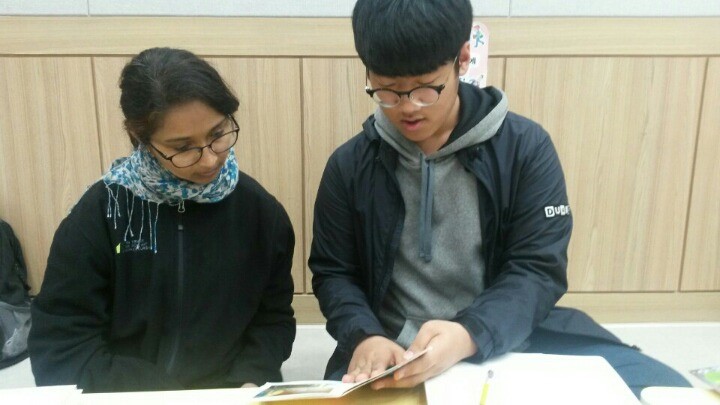Volunteering at the Children’s English Library in Gwangju
Written by Shilpa Rani
Photographs courtesy of UNESCO KONA Volunteers
At dinner, my six-year-old son asked my dad, “Will you tell me stories from the air force after dinner, grandfather?” Even in this era when we can call out to our artificial intelligence speakers and say, “Okay Google!” or “Aariya! Tell me a story,” grandparents are still a resource for exciting stories. The joy of listening to stories from real people will always remain enchanting. Similarly, I feel that no modern gadget can give one the joy of holding a hard copy of a book in their hands and disappearing into the wonderful worlds that books take readers to. Every child must experience this joy.

In the heart of Gwangju, there is one such heaven for children who like reading books the old-fashioned way. This place is the Children’s English Library (CEL) in Seo-gu, located inside the May 18 Memorial Park. It was inaugurated in 2009 and is one of the first few children’s libraries established in Korea. It is home to 32,700 books and has a beautiful reading area where visitors can either sit down or roll around and read books in their own way.
I was introduced to CEL in 2014 by Ms. Kim Youngim, the director of the Korean Organization of Natural Approach (KONA) volunteers. She had also been a part of the book selection committee for the library a year before its inauguration. At CEL, I volunteered as a story reading buddy to children. That was a great experience. I can never forget my first impression of the place. I have always told my friends back in Korea that the only two places that fill my heart with joy and give me true pleasure in Korea are libraries/bookstores and art supply stores. Since this was a library, it is needless to say that I was overjoyed. As a kid growing up in an Indian city, I had not had the opportunity to experience a whole library only for children. At CEL, I was grateful to be in the presence of so much knowledge, but at the same time, I wondered about all the kids around the world who did not have the same opportunities.

This past year when I had the opportunity to participate and help coordinate the buddy reading program organized by UNESCO-KONA at CEL, I volunteered. The event was held every Saturday afternoon from the months of April to June. The children would choose books that they were interested in reading. We would do silent reading sessions followed by collaborative reading with our reading buddies (children and parents), and at the end, foreign volunteers would share a fun fact about their culture with the rest of the participants. On some occasions, we had special guests who participated in our program at CEL. They were kids from Gwangju Children’s Home (광주어린이집) in the Sangmu area. We mostly did serious reading indoors, but we also learned from outdoor activity-based games at the May 18 Memorial Park. At CEL events, the children also learned public speaking while presenting a summary of their favorite stories to the rest of the participants.

It was a great learning experience, and I also made beautiful memories to take back home. I treasure all the beautiful handwritten notes I received with love from the kids. Above all, my experience with UNESCO-KONA taught me to dream big and work towards making those dreams come true.
The Author
Shilpa Rani pursued her doctorate and postdoctorate in Molecular biology at Gwangju Institute of Science and Technology (GIST) South Korea. Her interest in early childhood learning through creativity and stories got her volunteering for UNESCO as a cultural exchange volunteer (CEV) following which she volunteered at the KONA storybook center. She is a self-taught visual artist and dreams of starting a children’s library in India someday.




